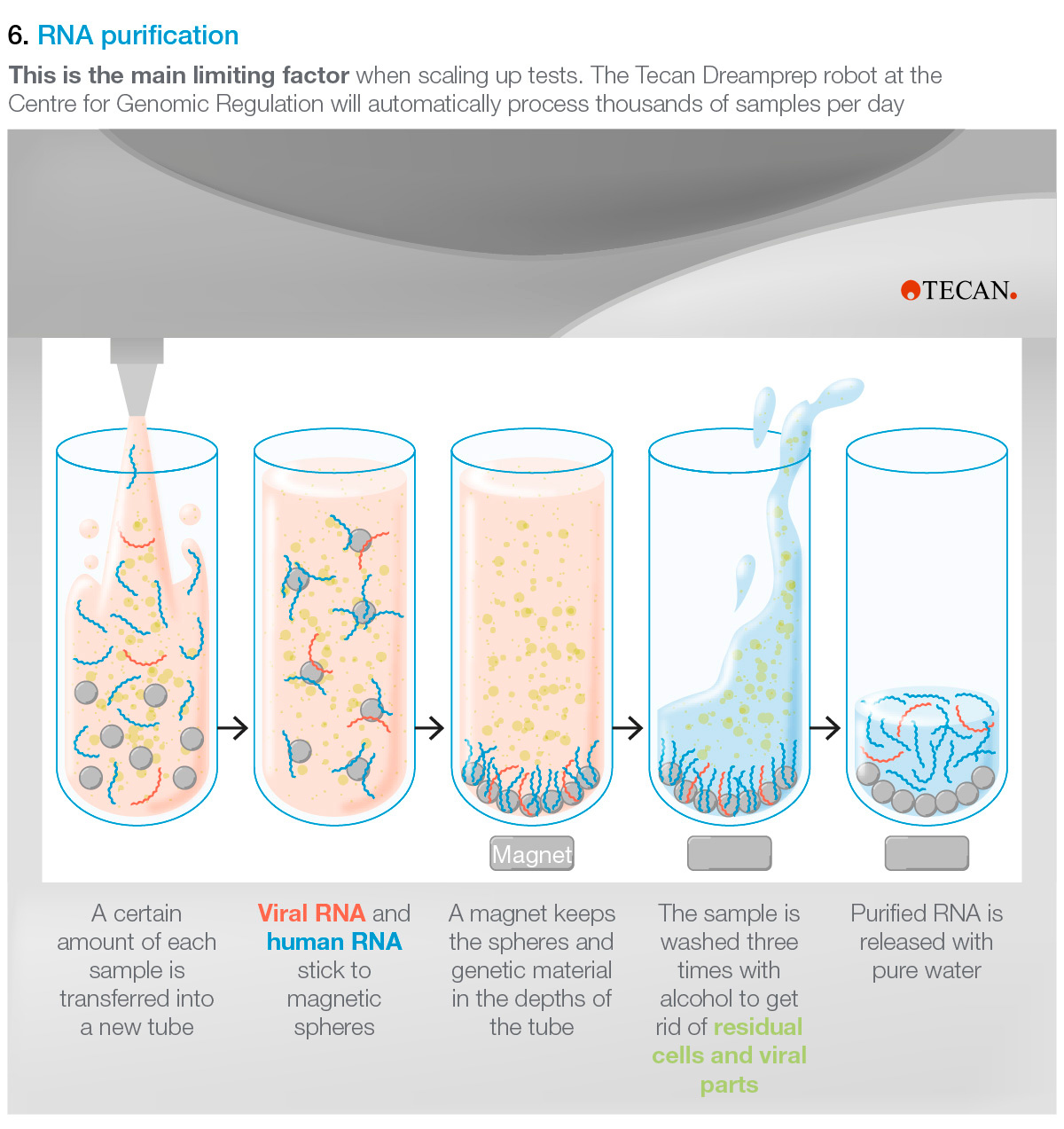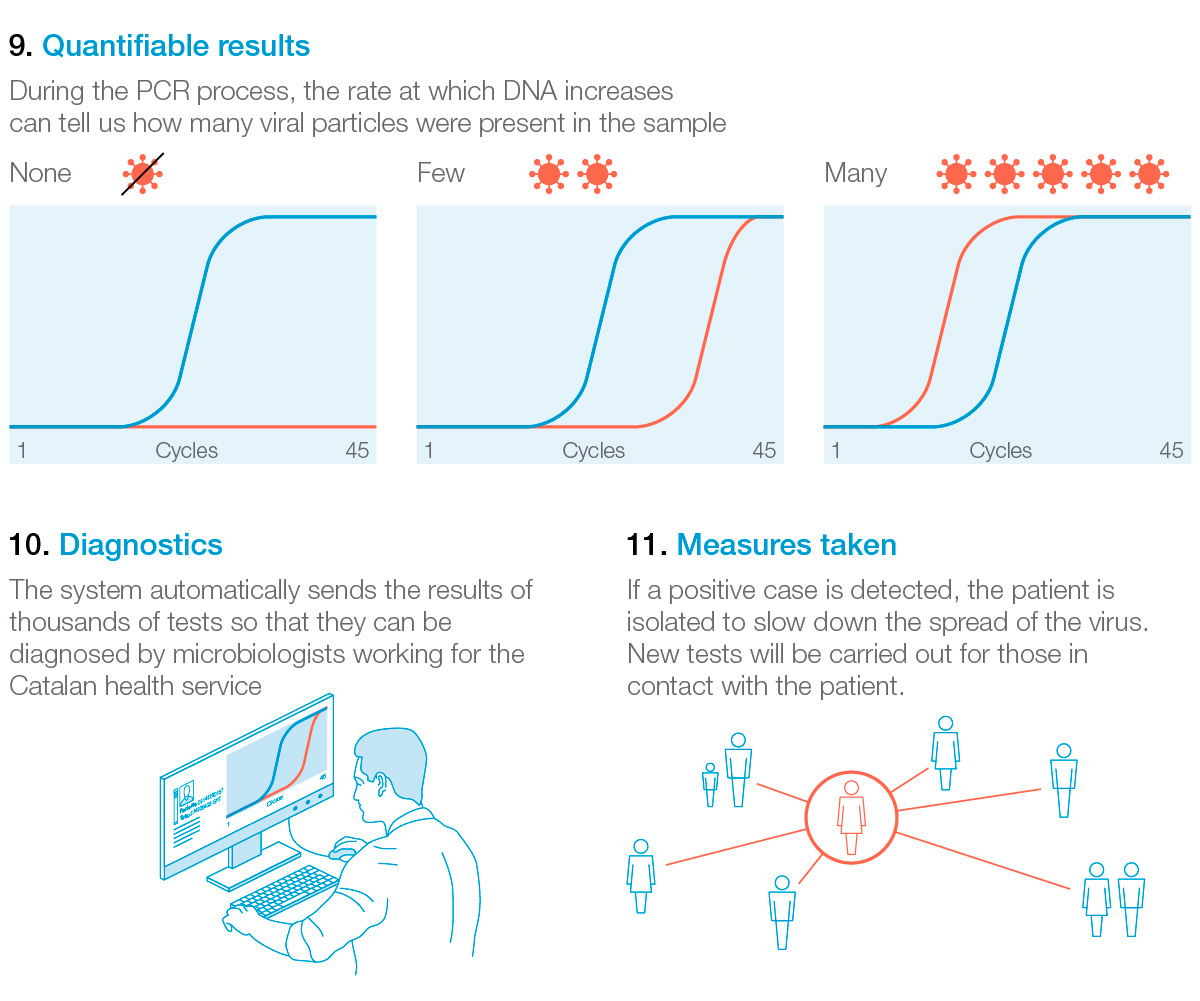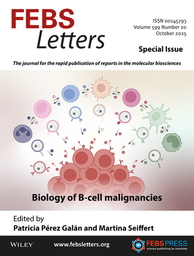Transforming a research institute into a COVID diagnostic centre – scientists step forward to protect public health during the coronavirus pandemic

Let us face it: COVID‐19 caught us unprepared. Virologists had abundantly described the high mutational rate of viruses and their potential infectivity. And yet, mankind was surprised by the sudden appearance of SARS‐CoV‐2. We saw what happened in China and watched the coronavirus spread through countries, but we were slow in reacting.
However, we do have the knowledge and the technology to help stop the pandemic, and scientists around the world are giving their all to make this happen.
COVID‐19 is treacherous because of the lag time between viral infection and the appearance of symptoms: 14 days during which an infected individual can inadvertently spread the virus to many other people. Early detection of the infection is key to preventing further contagion. Diagnostic centres normally have the capacity to run a few dozen samples a day, even a few hundred in hospitals, but this proved to be insufficient to control a pandemic.
The positive aspect, if there is one, is that diagnosing COVID‐19 is quickly and simply achieved by PCR. Easy peasy… All molecular biology laboratories are equipped with a PCR machine, so many research institutes around the world came to the rescue by setting up COVID diagnostic pipelines within their premises.
We describe here the implementation of an automated high‐throughput COVID diagnostic pipeline at the Centre for Genomic Regulation (CRG) in Barcelona, Spain, one of the hotspots of the pandemic in Europe, to provide useful guidelines for other organisations that may wish to embark on what has turned out to be quite a formidable enterprise.
‘I contacted the Spanish health authorities back in early March to offer the collaboration of the biomedical institutes belonging to the Association of Institutes of Excellence in Spain, SOMMa’, says Luis Serrano, Director of the CRG and Chair of SOMMa [[1]]. ‘However, the situation appeared to be under control at the time, and the offer was not picked up’.
Only a few weeks later, infection had spread, and the hospitals could no longer cope with the high demand for tests. The local government of Catalonia realised that the scientific institutes of Barcelona were a valuable resource and asked for their help. The agreement gave birth to the Orfeu Programme, a task force coordinated by the CRG, with the participation of the Institute for Research in Biomedicine (IRB), the Institute for Bioengineering of Catalonia (IBEC) and the the National Centre for Genomic Analysis affiliated to the CRG (CNAG‐CRG) to set up mass PCR testing across Catalonia. The aim of the programme is to screen the elderly in nursing homes and the local police, to reach a total of 170 000 tests. The CRG alone is running 2200 samples a day on average.
Read the full story about how these scientists worked incessantly to help control the pandemic in the freely accessible Scientists' Forum of FEBS Letters.
Ruffell, D. (2020), Transforming a research institute into a COVID diagnostic centre – scientists step forward to protect public health during the coronavirus pandemic. FEBS Lett, 594: 1811-1817. doi:10.1002/1873-3468.13860




Infographic by Fundamentium. Kindly provided by the CRG.



Join the FEBS Network today
Joining the FEBS Network’s molecular life sciences community enables you to access special content on the site, present your profile, 'follow' contributors, 'comment' on and 'like' content, post your own content, and set up a tailored email digest for updates.